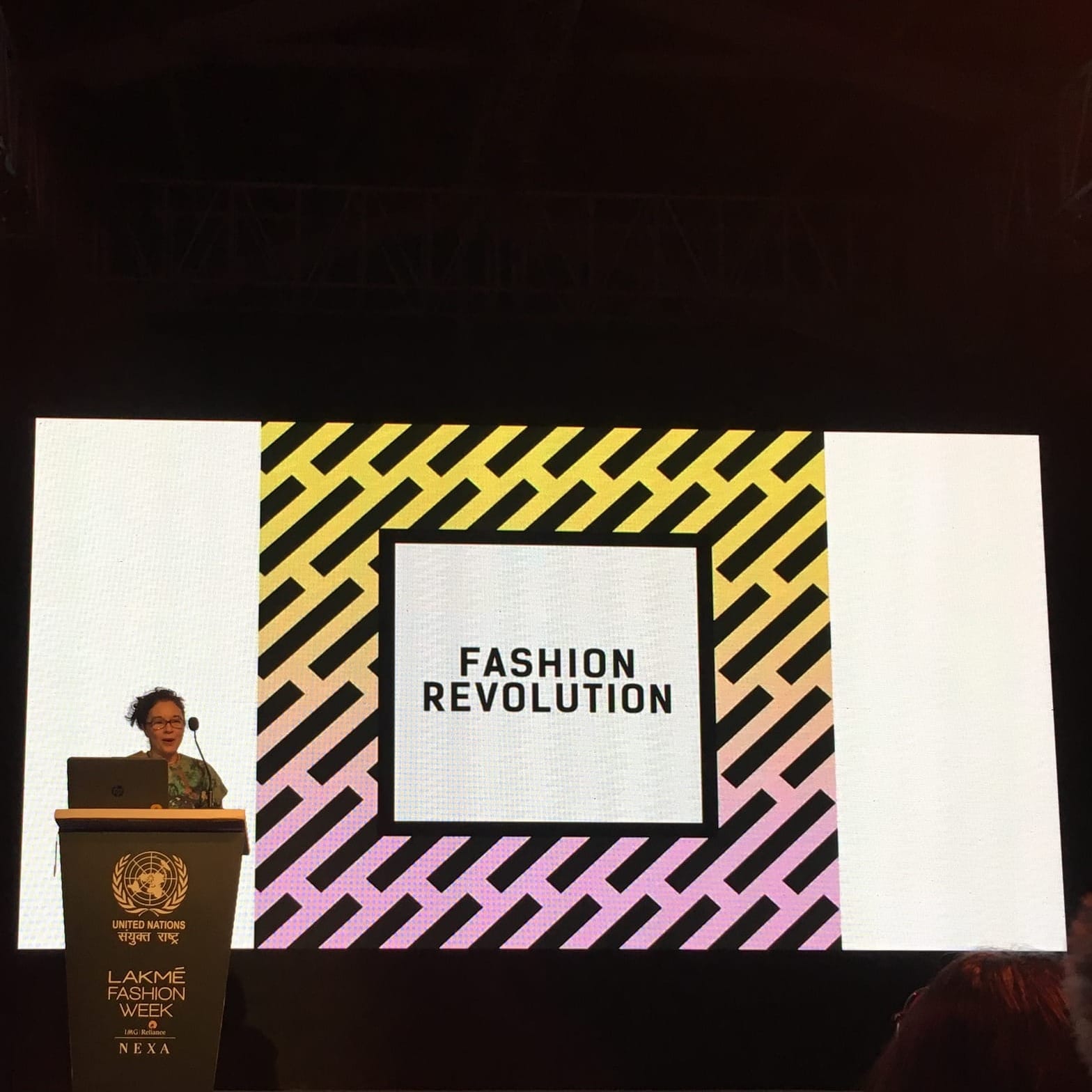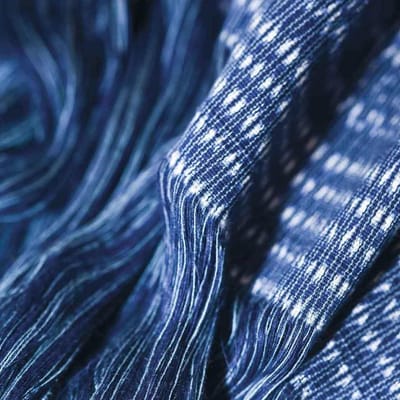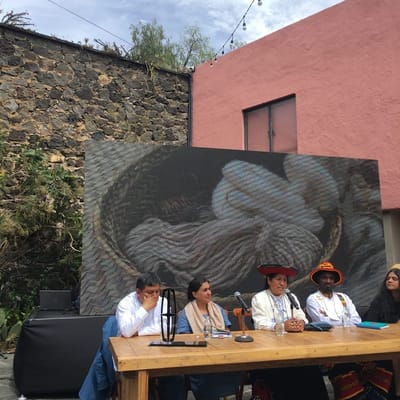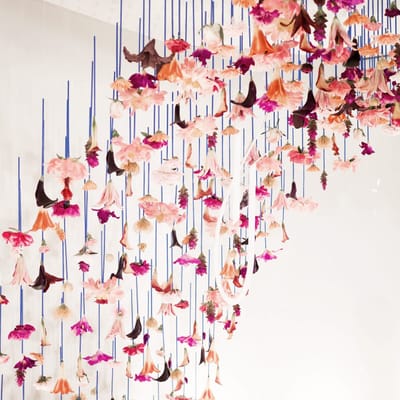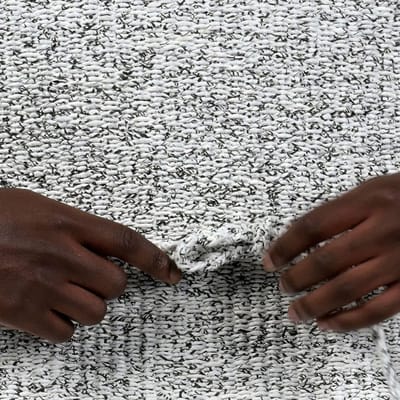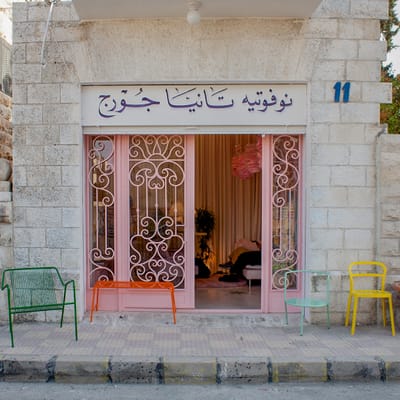In the five years since the collapse of Rana Plaza killed over 1,130 Bangladeshi garment workers, governments and industry have begun worldwide reforms to improve factory safety. These efforts have also broadened into a more systemic examination of the fashion industry, with consumers and advocacy groups looking closely at the intersection between fashion and human rights issues and also attempting to address pay inequities for garment workers.
Once such group formed in the aftermath of the Rana Plaza tragedy is UK-based Fashion Revolution. Fashion Revolution presses brands to improve their supply chain transparency and for countries to enforce building and fire safety standards. The group's most visible effort has been their "Who Made My Clothes?" campaign, which targets consumers in hopes of not only raising their awareness of these issues, but activating them to engage with brands to improve their practices.
THE KINDCRAFT recently sat down with Fashion Revolution co-founder Orsola de Castro and Suki Dusanj–Lenz, the group's country coordinator for India, during Lakmé Fashion Week in Mumbai. We asked them about what's been accomplished in the last half-decade — and what each thinks still needs to be done.
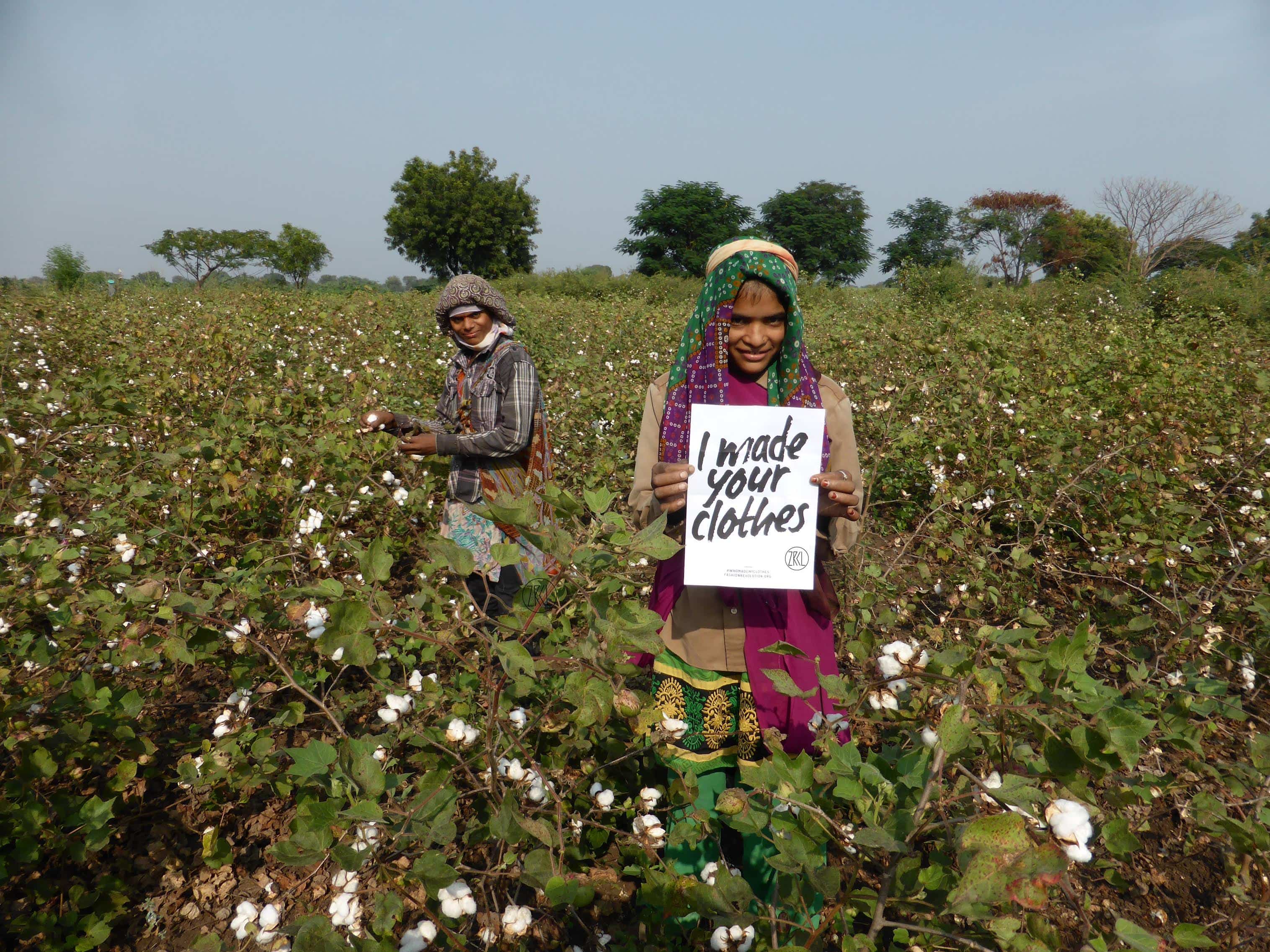
An Interview with Orsola de Castro
THE KINDCRAFT
We're coming up on the fifth anniversary of Rana Plaza. What's your sense of the progress that's been made?
Orsola de Castro
In many ways, lots of things have changed. And I say that because, with Fashion Revolution, we've reached a very wide audience. And the more I go along this journey, the more I realize that there are [so many] people who want an understanding of the issues. This is for consumers, but also brands. We published our first fashion transparency index in 2016 and, already between 2016 and 2017, there was an exponential increase in brands wanting to publish their first and second tier supply chain. [EDITOR'S NOTE: Updated data for 2018 has just been released.]
THE KINDCRAFT
But I think I read that the percentage of brands doing this isn't actually all that great...
Orsola de Castro
By our methodology — and by what we would like to see — even the top brands are hovering around 49 percent. But transparency is very much a first step. If you can imagine, it's like opening your front door and allowing people to see in. You know — they don't see the full picture but... you might have your bedroom tidy for the next visit.
So it encourages accountability. It encourages responsibility. It doesn't necessarily lead to best practices. And this is what's important. It's not a shopping guide. If someone's doing well, it doesn't mean "go for it" — It means 'find out more'. Keep finding out more. So it is about public disclosure and it is about, somehow, preventing disasters such as Rana Plaza. And in that context, we've seen a positive change.

THE KINDCRAFT
What progress has been made for improving worker safety?
Orsola de Castro
Well for starters it has led to the creation of the [Bangladesh] Accord which is due to be renewed in May 2018. We're hoping that as many brands as possible will renew this groundbreaking initiative that really has made lives better. So that's very much from the bottom of our heart. We hope to see this.
The fashion industry — It's a big ship and it'll take time. What's changed is the fact that citizens are actually now genuinely understanding that the people who make their clothes may not be safe — and they don't like that very much or, at least, a huge amount of citizens don't like that very much. People want to wear worker's dignity, they don't want to worker's misery.
So the fact that we have shone a light on the people that make our clothes, the fact that we've had conversations with them via several projects from the Garment Worker Diaries through to our fanzine, we begin to understand that this conversation is now endemic in the way that we think when we think about clothing, which is similar to what happened in the food industry to a certain extent. We now definitely do look for something organic. So we want to see this same attitude happening to those £1.50 t-shirts which are made with [non-eco] black dye.
"We have to see the industry as a whole and we have to see ourselves as within this industry. "Orsola de Castro
THE KINDCRAFT
Has Fashion Revolution's mission shifted more towards consumer awareness of "fast fashion"?
Orsola de Castro
First of all, Fashion Revolution does not demonize "fast fashion". For us, it's the fashion industry that is responsible. Obviously with fast fashion, we know about the quantities and the cheap [costs]. But I mean, you know, luxury fashion ain't slow — and it's certainly responsible for a whole load of other issues, whether it's the use of leather or if they truly support artisans.
We have to see the industry as a whole and we have to see ourselves as within this industry. Our closets are somewhere in the fashion supply chain, and so our choices are vital in terms of this conversation. What we're seeing is that the vocabulary is becoming more intelligible to people. People are more and more curious and, therefore, more questions are being asked.
What we are also seeing — forgive me I'm the creative director, so I tend to talk about that aspect as well — but while, say five years ago, the idea of something "ethical", "sustainable" — immediately dragged you down, it's now the new avant-garde. This is the new creativity. So that's shifted hugely in terms of public perception.
THE KINDCRAFT
Is that one of your intents — to shift the notion of 'luxury' towards ethical/sustainable?
Orsola de Castro
Totally. I mean — Fashion Revolution does so many things, but that's because we are so many people. We are actually the biggest fashion advocacy movement in the world and we respect other people's interests and so, in that sense, it's very open — and yes, my personal instinct is that there is no biodiversity in the fashion supply chain. I'm bored of, you know, it's either Primark or Prada.
In my other life, I lecture at universities and I work with very young designers. Creativity matters hugely to me. This particular project that I'm here to promote and launch actually at Lakmé Fashion Week is about artisanry. And that's something which is, indeed, very close to my heart. I am interested in people. I am interested in history. I'm interested in movement and I am really interested in beauty. And craft somehow rubs it all together.
THE KINDCRAFT
Where did your love of craft come from?
Orsola de Castro
My love of craft is... I probably was born with it! But the first time that it hit me... It was exciting. It was like watching a film, like watching a thriller. I was in northern Thailand with my 3 year old daughter, so this was a long, long time ago, and we were visiting a Lahu tribe. They were embroidering something very similar to a headband that I was wearing which had been embroidered in the south Tyrol [with a design of] a flower that looked like an Edelweiss.
So here I am with my daughter, both wearing our little headbands from from the south Tyrol. And yet, the embroidery of the Lahu people looked incredibly similar. It felt like we'd solved a riddle. You know — I told her the best fairy tale story that night. "Imagine — in ancient time, this wonderful woman with all of her embroidery starts on a trip and crosses China and goes..." and that's the story of embroidery: It's a language, it's a map, it's travel. It's anthropology and history and love -- all from one's mind and head. I mean -- how could it not be the most enchanting thing ever?
THE KINDCRAFT
It seems like your involvement with Fashion Revolution has also been an incredible journey. On a personal level, how has it affected the way you see design and global culture?
Orsola de Castro
It's a very difficult question to answer because, you know, I am a mother of four. I was a designer. I'm quite a fulfilled woman, but Fashion Revolution... well first of all, it humbled me in a way that I wanted — and that I needed — and did that in a way that really grew me. It gave me this further understanding of the fact that we're on this planet and we really do have an obligation to leave it in a better state than when we found it.
But for me — I would never have expected to be able to do something like this. I think we talk a lot about inspiring women and, you know, the garment workers and people that work across the fashion supply chain. I feel like I, too, have been empowered by this journey. I can say "I am a 50 year old woman. I too want to be visible." It's this sense of being able to take something on your shoulder and start on a journey, not necessarily knowing where it's going to take you. Meeting an enormous amount of people who are on that journey with you, holding hands, making things happen and creating change. I have no words to express how grateful I am to have been on this journey.
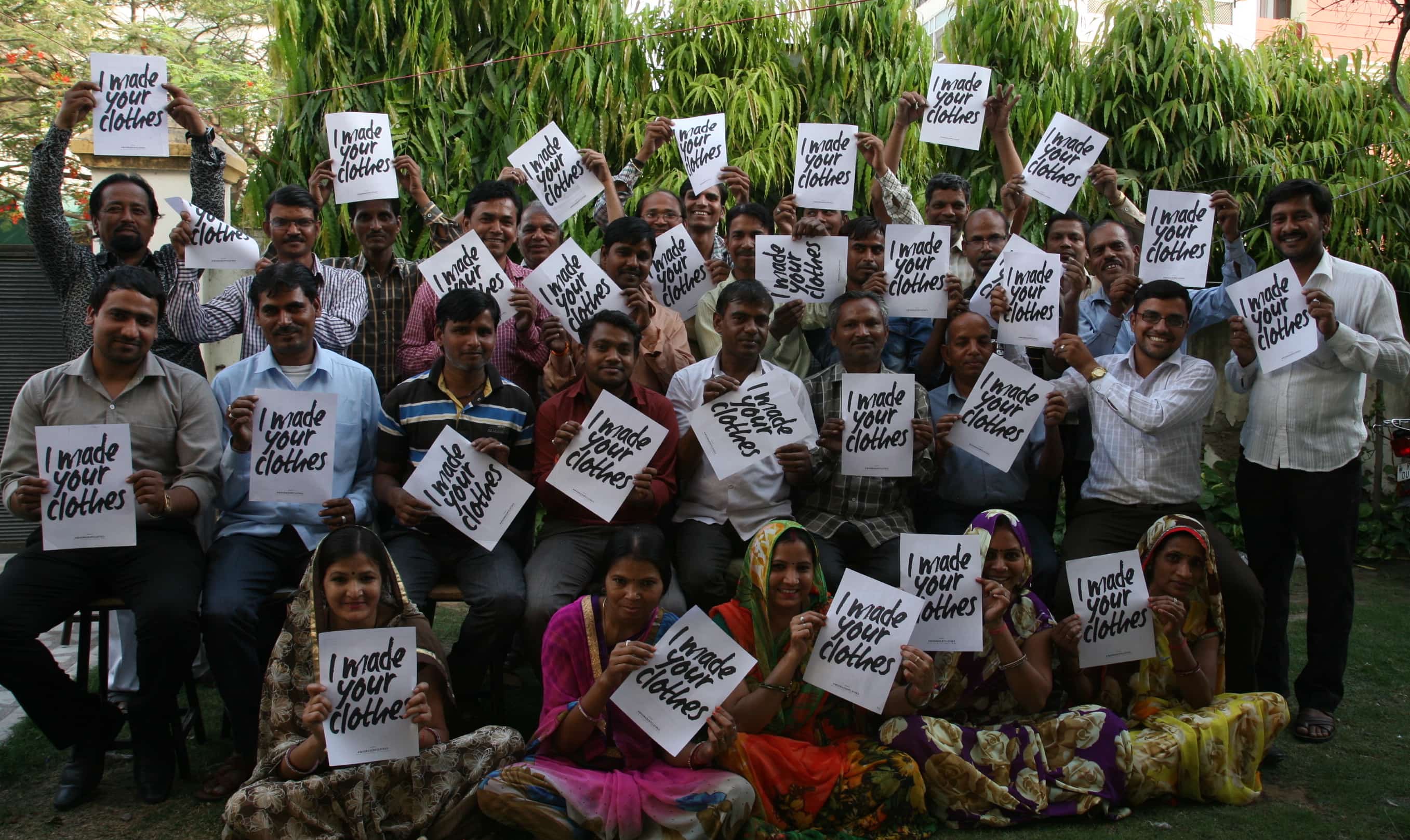
An Interview with Suki Dusanj–Lenz
THE KINDCRAFT
Can you tell us about your involvement with Fashion Revolution and, more broadly, with fashion?
Suki Dusanj–Lenz
My relationship with fashion began many years ago — particularly sustainable fashion. It was about 15 years ago that I became more conscious as a consumer or start realizing just what's wrong with the textile industry. Around that time, I met Orsola through the through the Ethical Fashion Forum in London. She was a very passionate advocate for sustainable fashion and I learned a lot through her, as well as Jocelyn Whipple who is also part of the executive team in London.
I've been Fashion Revolution's India country coordinator for about two and a half years, and I was very honored when Fashion Revolution HQ called me and invited me to come on board. India was such an important area to "the revolution", should I say, and because we had that very close relationship from many, many years ago and I'm constantly working between India and Europe, I understood the needs for the campaign globally and was equipped to deal with what we needed to create locally.
THE KINDCRAFT
Unpack that a bit — the need to traverse between the global and local?
Suki Dusanj–Lenz
My mission was to build a strong team in India to create a more impactful campaign for sustainable fashion. The dual role is important because we need to celebrate all the great things that India produces but also to understand the role of the Indian textile industry in the global sphere of the fashion industry. India is such a mammoth manufacturing hub for the rest of the world, so it's important that we understand what it takes to produce [sustainable] fashion on the high street for people all over the globe.
THE KINDCRAFT
What's the relationship between the Indian fashion market and global trends?
Suki Dusanj–Lenz
Global trends have a massive impact on the consumer in India. There's a hunger for the Western brands and labels here. You can see that from the giant high street brands like Zara and H&M that are now in India. And it's great that those brands are here but, with India, there's also a fast-growing consuming culture -- especially among young consumers. The power of these young Indian consumer is something that we're leaning towards and reaching for in order to highlight certain issues about the industry.
We really want to encourage young India to, perhaps, buy a little less and to reuse and recycle a little more. We have a campaign called "Loved Clothes Last" and we encourage people to love those clothes that they are re-wearing and let us know about them so that we can make it cool and trendy to reuse and recycle.
THE KINDCRAFT
You put your finger on an interesting point: As India becomes a large consumer market, it becomes more critical to shape consumer attitudes, not only those of governmental and industry stakeholders.
Suki Dusanj–Lenz
It's really important. Fashion Revolution is a multifaceted campaign and we don't just target the consumer in our campaign. We are very much campaigning on a governance level and manufacturing level, on the design level and consumer — all of those coming together, one garment at a time and one campaign at a time.
THE KINDCRAFT
How do you reach out to all those different groups?
Suki Dusanj–Lenz
Primarily, Fashion Revolution's strength is reaching people through digital mediums — celebrating sustainable fashion and also highlighting or spotlighting changes that we want to have made. We are engaging with the youth of India [because] we believe they're creating the ripple effect for the future. We're hoping for a domino effect of change.
THE KINDCRAFT
How do you coordinate the message over such a large region like India?
Suki Dusanj–Lenz
Very strategically. We've got to view India like a continent: Each state is like a country unto itself. What we've done is we've identified as strong advocates of sustainable fashion in regions, so we have regional leaders now and I'm building the team up and down in India. Slowly but surely. We're very much on a marathon and, while we're aware of that, we're confident that we will make some changes — slowly but surely.
We're also celebrating at a local level the crafts and weaves of various regions. I think it's important to show the next generation all that is right about fashion within India as opposed to just what's out there in the rest of the world. We need to celebrate more about the good that we are doing in our home grown India — and what's beautiful about India is that we're a hot-pot of incredible weaving and handloom. Our artisan culture should be celebrated and spotlighted more than we are.
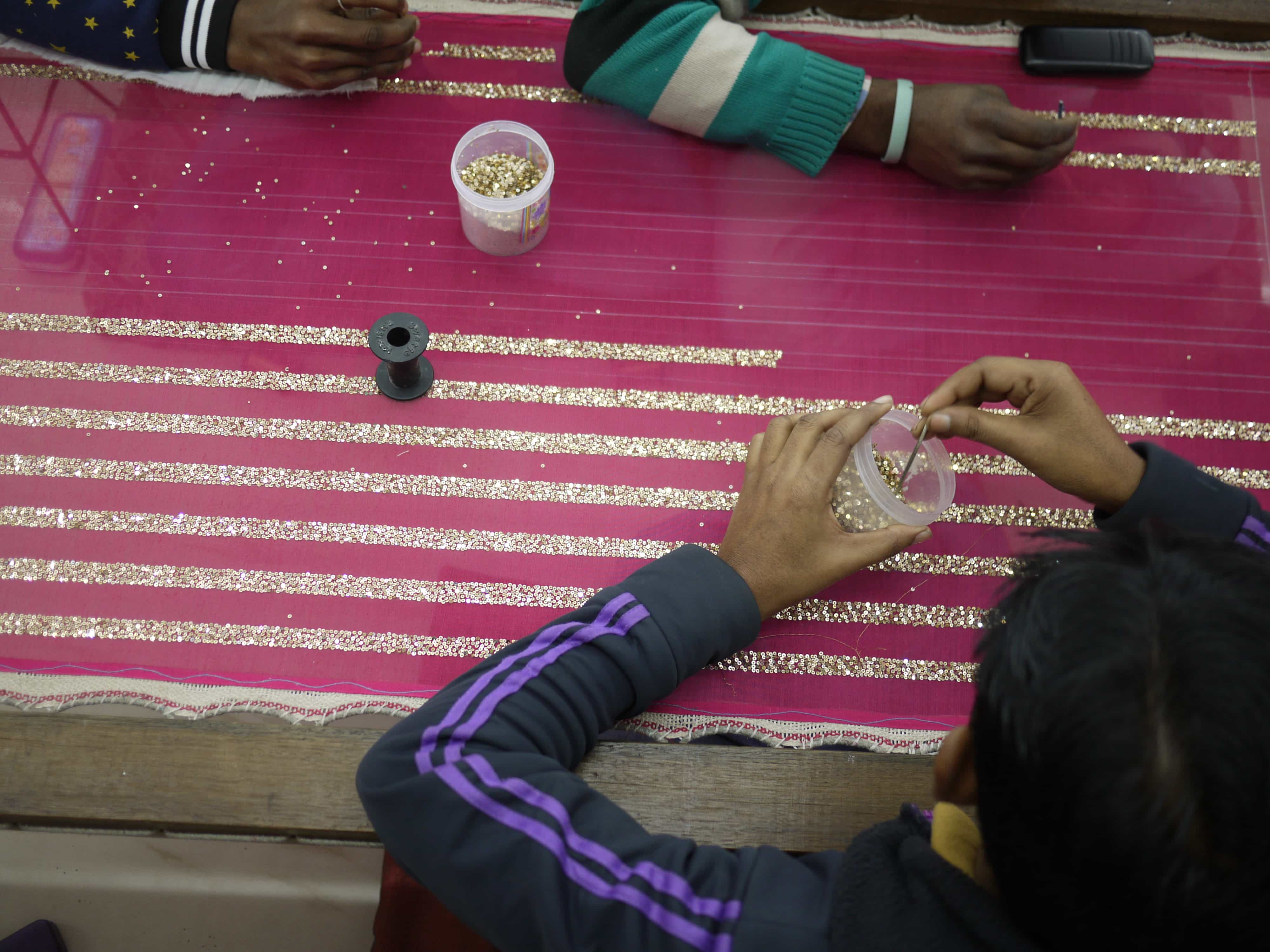
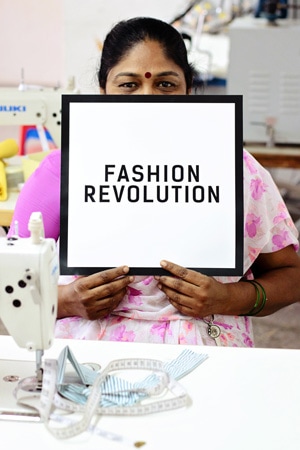
THE KINDCRAFT
What else do you hope to accomplish?
Suki Dusanj–Lenz
I would love to see chemicals that are banned in other parts of the world to be banned here in India. Just look at our leather industry. I'm appalled that we're still allowing our leather-workers and dry-cleaners to be exposed to dangerous chemicals that are banned in America or the U.K. and other countries.
Do our lives matter any less? I think not. So we're knocking on those government doors to say "Let's make bold changes and takes steps to improve".
THE KINDCRAFT
I'm curious — Are country coordinators able to use the Fashion Revolution platform to transmit what's happening on a local level — things like this chemical issue — back out to a global audience?
Suki Dusanj–Lenz
That's a really good point. I would say, yes, we can certainly lean our other coordinators around the world to rally and encourage change to be happening within India. I think the reach that we have around the world is huge. Just last year alone, we reached over 160 million people during Fashion Revolution Week.
This year, on April 24, not only do we want to honor those people that died during the Rana Plaza disaster, but we also want to celebrate great homegrown Indian brands. We want to talk to that to all the other leading nations in the world to celebrate what we have here in India. Beyond that, we want governments to listen — to wake up to the challenges that our industry is facing.
These interviews have been condensed and edited for clarity.

